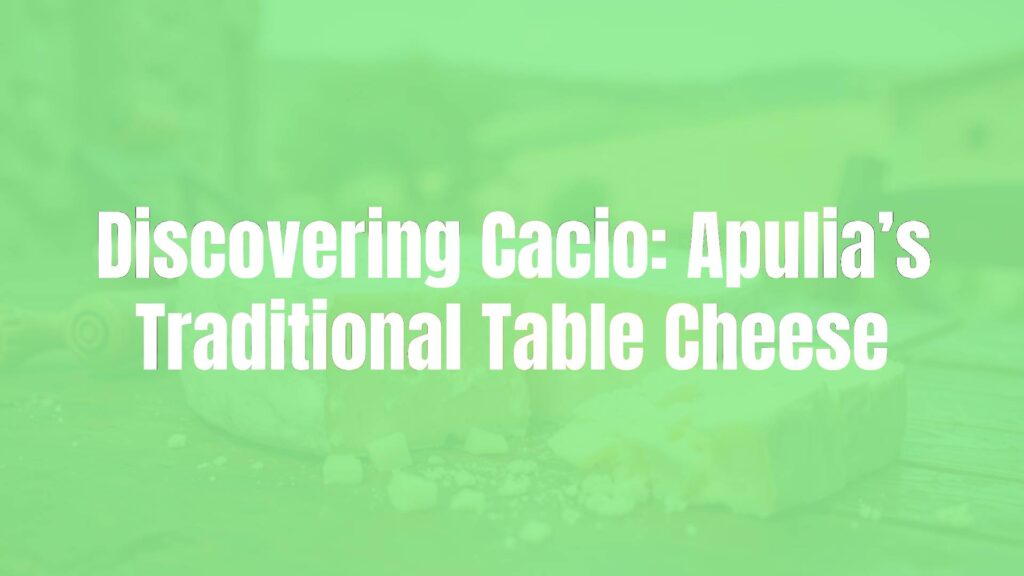Introduction to Cacio from Apulia
Deep in the heart of southern Italy, Apulia is a region famed for its rich, agricultural landscape and a host of distinctive cheeses. Among them, Cacio (often referred to simply as “formaggio cacio” in the local dialect) stands out as a beloved staple with deep cultural roots and a comforting flavor. Though the term “cacio” generally means cheese in Italian, within Apulia, it specifically denotes a semi-hard, cow’s milk cheese that reflects the traditions and tastes of the region.
Unique Qualities of Cacio
Cacio is characterized by its pale yellow rind and a supple, firm interior that becomes pleasantly crumbly as it ages. The cheese offers gentle, milky notes with hints of butter and grass, owing to the diet of the local cows. As it matures, Cacio develops a richer, nuttier flavor, accompanied by a subtle tang. Its microwave flavor profile and moderate saltiness make it exceptionally accessible both as a table cheese and for culinary purposes.
Origins and Historical Significance
The tradition of making Cacio in Apulia dates back centuries, rooted in the region’s agrarian history. Originally produced by farming families as a way to preserve surplus milk, Cacio quickly became an everyday food enjoyed across social classes. The techniques and recipes have been passed down through generations, with each town and family sometimes introducing slight variations, but always preserving the cheese’s rustic essence. Today, Cacio is seen as a representative taste of Apulian heritage and resilience.
Production Methods
Production of Cacio utilizes fresh, local cow’s milk that is gently heated and coagulated using natural rennet. After forming curds, they are cut, shaped, and placed in traditional molds. The cheese is then salted, either by hand or in brine baths, before being left to mature for weeks or months, depending on the desired final texture and flavor. Artisanal producers in Apulia often favor natural aging cellars, which impart earthy undertones and a unique character to each wheel of Cacio.
Cultural Role and Traditional Eating Habits
Cacio plays a prominent role in Apulian cuisine and culture. It is frequently included in everyday meals, featured on antipasto boards alongside olives and cured meats, or simply sliced and enjoyed with rustic bread. During festivals and family gatherings, it is common to see Cacio served as part of abundant feasts, symbolizing sustenance, hospitality, and community.
Typical Pairings and Serving Suggestions
The mild yet expressive nature of Cacio pairs beautifully with local Apulian wines, such as the fresh whites of Locorotondo or the light reds of Salento. It is also excellent when matched with seasonal vegetables—think ripe tomatoes or artichokes—or drizzled with regional olive oil. For a heartier option, Cacio can be cubed into warm pasta dishes or melted over baked preparations to lend its creamy, savory essence. When served at room temperature, its flavor and aroma are at their fullest.
Regional Variations and Modern Adaptations
While the foundations of Cacio remain consistent, some dairies may smoke the cheese lightly or enrich it with herbs or black peppercorns, reflecting the creativity of Apulian cheesemakers. In recent years, some producers have experimented with blending sheep’s or goat’s milk to introduce new textures and flavors while still honoring traditional methods.
Conclusion
Cacio from Apulia embodies the region’s culinary ethos: simple, genuine, and deeply satisfying. Whether enjoyed as part of a rustic meal or savored on its own, this cherished cheese offers a true taste of southern Italian tradition and the enduring skills of its agricultural communities.

